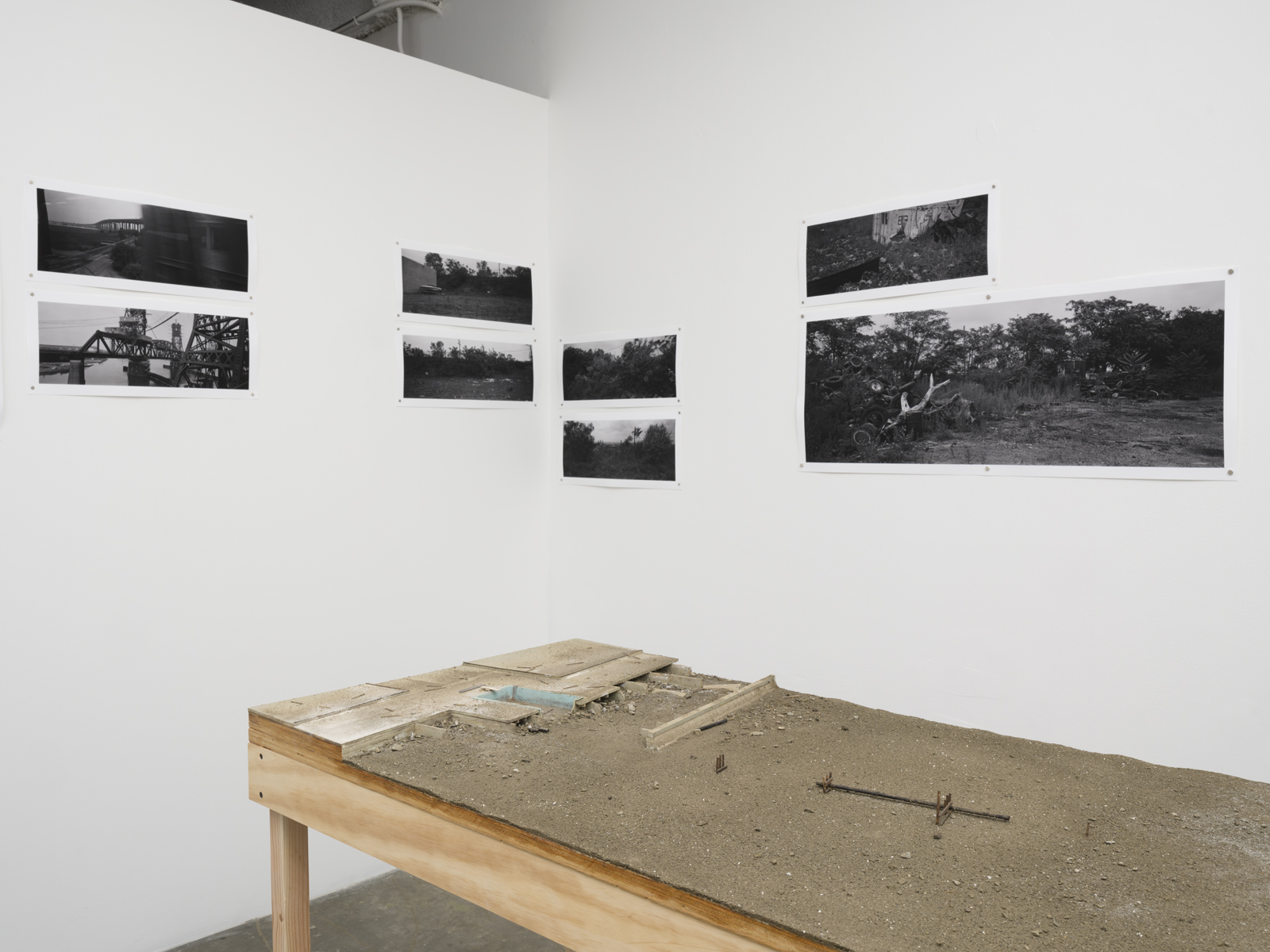
Michael Ashkin “Here, in the desert” installation at FOYER-LA (photo: Jeff McLane)
FOYER-LA’s current project, “Here, in the desert,” unites photographs, sculptures/models, and writing by Michael Ashkin. The work grew out of Ashkin’s lifelong fascination with the New Jersey Meadowlands. Between 1993 and 2000, Ashkin wandered the area and began thinking of the Meadowlands as a site of “found gardens” where hidden struggles within our landscape revealed themselves. With this in mind, he photographed the Meadowlands and built sculptural landscape models using this source material.
Interview by Connie Walsh
I am curious about your choice to often not include humans in your images—how do you see our role as individuals or as a society with the production and transformation of space and how do we distinguish between nature and not-nature/man-made? Is that a distinction that matters to your work?
I generally don’t include humans for a number of reasons. I tend to see landscapes as themselves personified or extensions of us; even if we don’t see people, the traces of all their present and future sufferings and dreams are layered into the landscape. I have sometimes thought of this as a broader extension of Marx’s expression “dead labor.” I also don’t trust myself to photograph people properly, especially close up; I am never sure what is being expressed in the photograph and who is doing the expressing.
I don’t believe the nature/not-nature dichotomy applies. On a perceptual and epistemological level, everything is and has always been anthropomorphized—nothing natural can be represented or known in an unmediated manner. Furthermore, the human has insinuated itself into every relationship between objects on this planet; even objects that appear to be natural (say a rock) cannot exist outside the framework of human intervention. Real estate, the nation state, the park system, the threat of nuclear holocaust, pervasive post-WWII atmospheric radiation are just obvious examples. Nature exists for me but in an unknowable sense—it exists beyond our formulations and is ultimately connected to some divine logic that encompasses absolutely everything. I see my photographs and sculptures as being a place where the relationships between our provisional formulations of natural law and historical human behavior play out. These are places where we can re-envision and re-intuit based on the best of our partial knowledge.
I am also thinking about others’ descriptions of your work—“depicting marginalized, desolate landscapes.”
Everyplace is desolated (or marginalized), the question is in what way. By that I mean that there are unknowable corners and outskirts to every object.
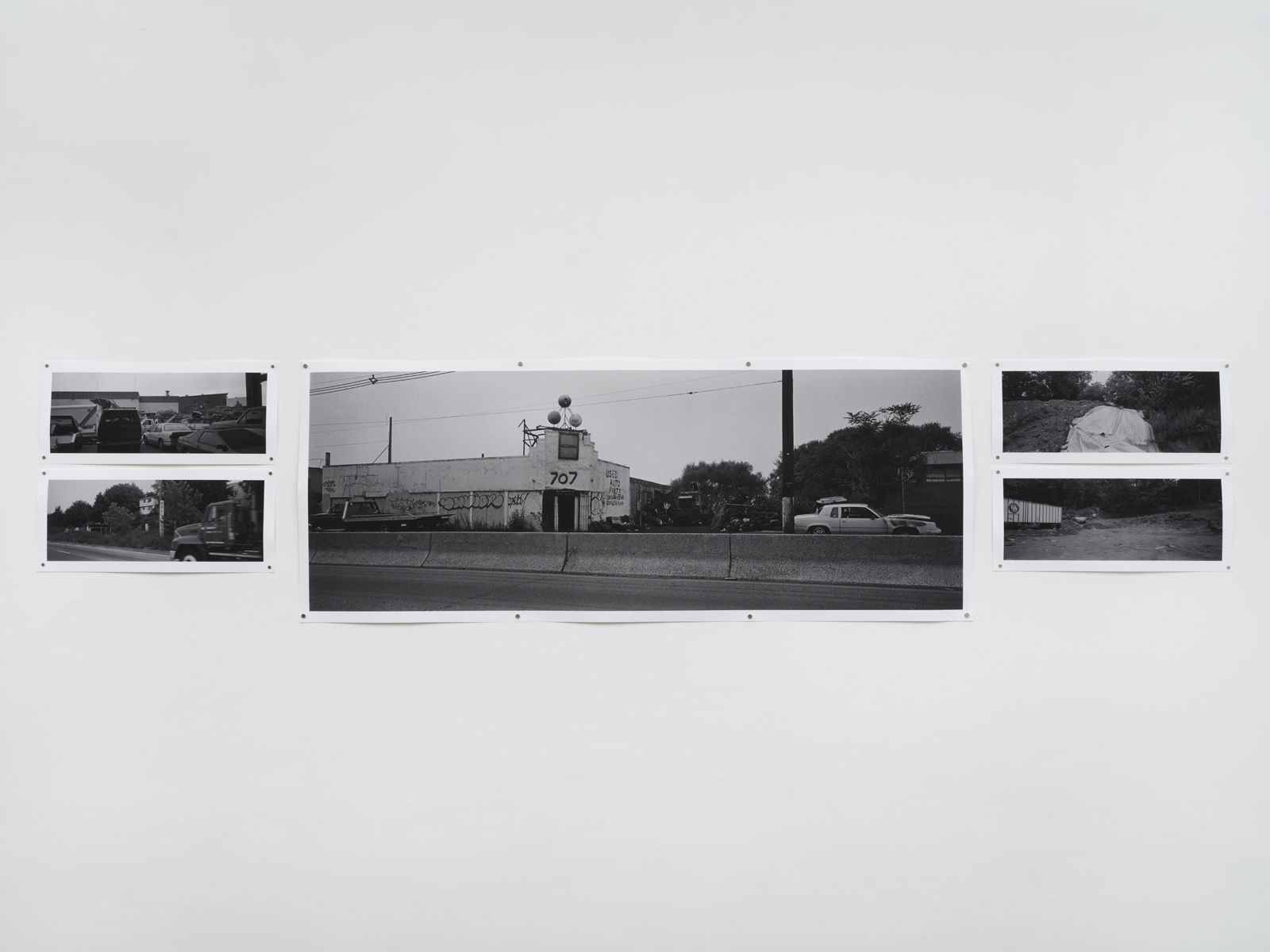
Michael Ashkin-“Here, in the desert” installation at FOYER-LA (photo: Jeff McLane)
What makes the space seem marginalized—is it forgotten-frozen in an in-between state or moment, neither depicting an ever-changing natural state nor depicting a built state in its glory?
I agree, that it is say: forgotten, but by whom and for how long. I believe that on a deeper level, we know everything; we just need to be reminded of it.
I want to go back and look at your images from your time exploring Berlin. Somehow, I feel a sense of nostalgia, but I am not even sure what I mean by that. What do you see when looking at these images: do they represent/explore an in-between moment?
In Berlin perhaps the nostalgia you sense is, if I am lucky, the sense of history buried within the present. Of ruins no longer visible exerting their presence. At least that is what I felt when I took the pictures. The rubble, the barriers, hardened building facades, fences, and obscuring trees gave me the impression of a landscape in which forces were still struggling in seeming stillness and silence. I say seeming because the seismic forces of subterranean history persist and their coincidence can produce events that, for us, will be unexpected.
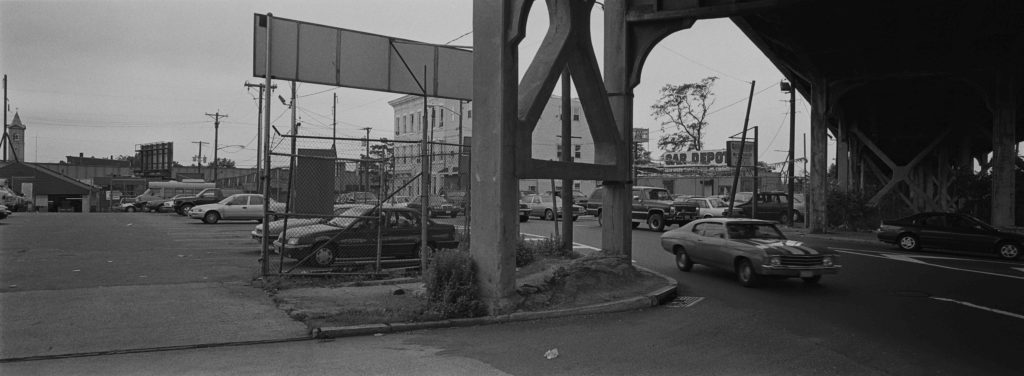
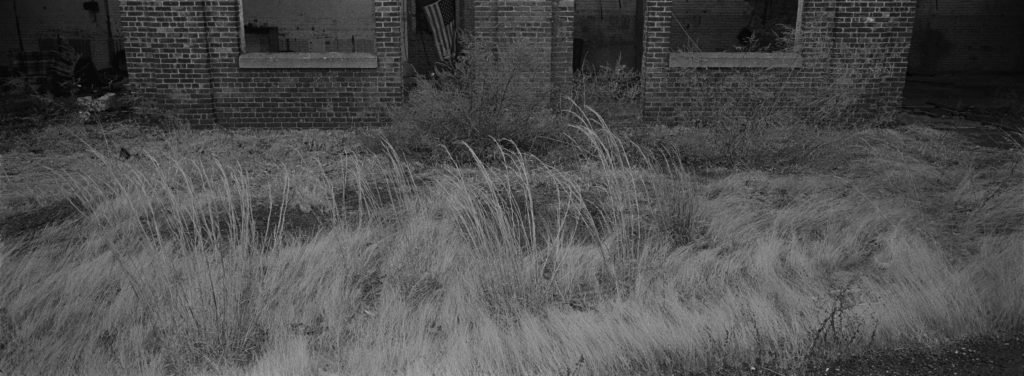
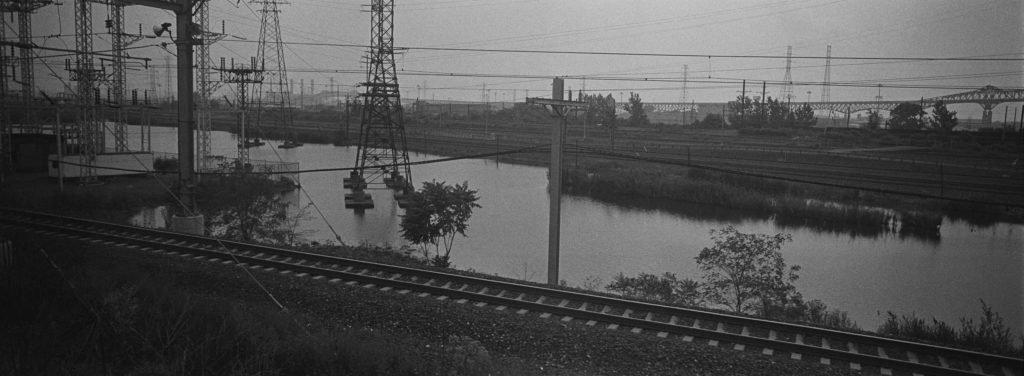
untitled images from the book There will be two of you (Fw:Books 2023)
You speak of violence—violent acts—and the idea of a haunting feeling; can you talk about this more? Who is being haunted and by what? Is it a feeling/tension you are trying to capture? Do you feel the photographs you construct expose violence/or violent acts and if so between what or whom? Is there some responsibility or evasion of and by whom?
If something is haunted, it seems to me, that means that something is being repressed. Perhaps every human decision involves some repression. Every choice involves violence to the extent that one route was taken over another. Entropy brings on a healing or scarring by means of a repressive forgetfulness. But that entropy, at least in the human world, is the result of a choice, political in nature, that is inherently violent. So the humans, their objects, and their landscapes are haunted by all past decisions.
For me, your images contain a representation of some sort of juxtaposition/struggle between nature and industrialization, but it feels almost poetic—like the two aspects/forces are trying to have a copacetic existence. Nature is reclaiming, growing out of the destruction—the industrial wasteland, trying to find a balance or a place to cohabitate.
I like that. Perhaps there are no stable objects, only forces at play, and all forces—at least how we see them—are both natural and human cultural/industrial.
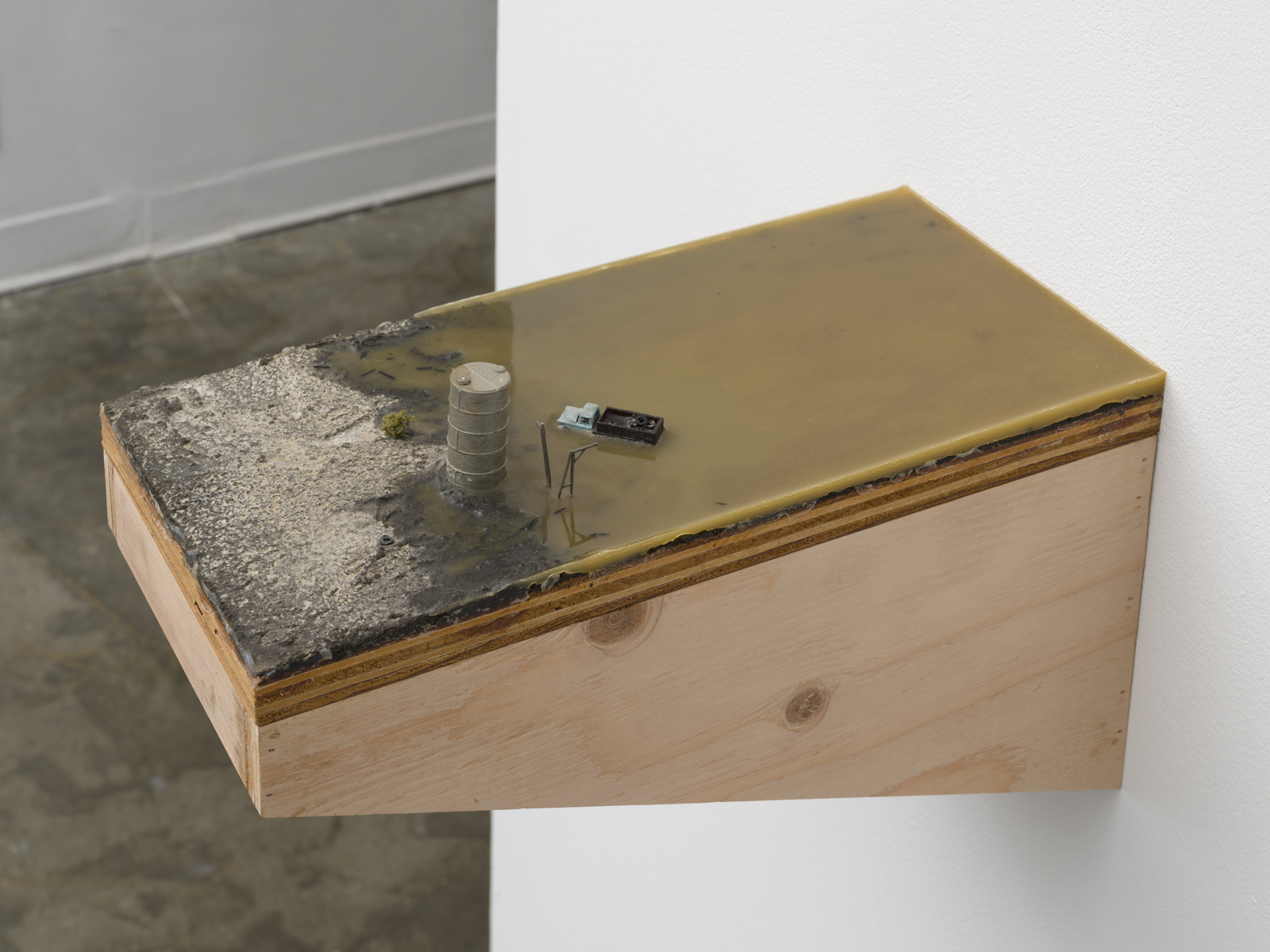
Michael Ashkin-“Here, in the desert” installation at FOYER-LA (photo: Jeff McLane)
I have been thinking about Susan Stewart—the miniature and the gigantic—in terms of seeing your sculptural work adjacent to your photographic work. Somehow the models seem to feel to me as a representation of infinity/endless vast landscapes—expansive. The photographs feel intimate—even when printed large—at times claustrophobic. Which all feels a bit off kilter—thoughts on scale and your usage?
Very good question, I had never thought to compare them this way. And you are right. I know that I considered both the models and the photos to be contemporary “found gardens.” For me gardens, particularly the formal gardens of the Renaissance and the Enlightenment, tried to reveal some image of truth about the relationship between man and nature. I was consciously trying to do something similar in both bodies of work, incorporating the ghost forms (and their negations) of those historical and idealized gardens.
On the one hand, the models were constructed “found gardens” and perhaps, to achieve their truth value, the need existed to show that they were representative extracts from a much larger space. For this the miniaturization of a vast space from which a small piece was cut proved useful. The border, which I placed exactingly for the sake of proper garden proportions, still needed to feel somewhat arbitrary in a landscape of sublime extension.
On the other hand, the photographs, as enframed “found gardens,” responded to a real topography, and the sublime proliferation of their internal logic required maintaining an internal claustrophobia that I could relentlessly repeat in variation from one photograph to the next, either in the form of a very large grid (as at Documenta) or in a long “walking” sequence (as in There will be two of you). The hope was that here truth value could be obtained by the repetition of photographic extracts which appeared to be, but actually were not, arbitrary.
It’s funny you’re mentioning that the larger photos seem claustrophobic. Oddly, they do seem simultaneously both more claustrophobic and infinitely extending than when they are small. Perhaps that is because when they get larger their logic appears to expand internally as more and more details, not discernable in the smaller prints, emerge.
Are you alone? How is the experience different when it is shared? What is the “unspeakable” in your writing? Did something/someone impose an end that you write of in the book or was it a natural ending—the walking with another. I am thinking about presence and absence—both literally with a lack of human representation in your photographs and sculptures and this feeling as a viewer that I feel a part of the represented morphing—the images feel still and yet they feel almost like a film still of a larger act—development/change/deterioration/evolution.
“Am I alone?” I guess the answer would be “yes and no,” or “yes or no.” Whether one or two enter the hanger is beside the point. The sense of feeling alone stretches over my whole Meadowlands experience, but, in actuality, through a series of irretrievable and alien selves. I began walking the Meadowlands to understand them and my relationship to them. But a unity of self and experience eluded me. All I have are the fragments: the images, language, memories, and memories of memories. In the story, “There will be two of you,” which ends the book, there is the momentary promise of unity, even as it dissolves.
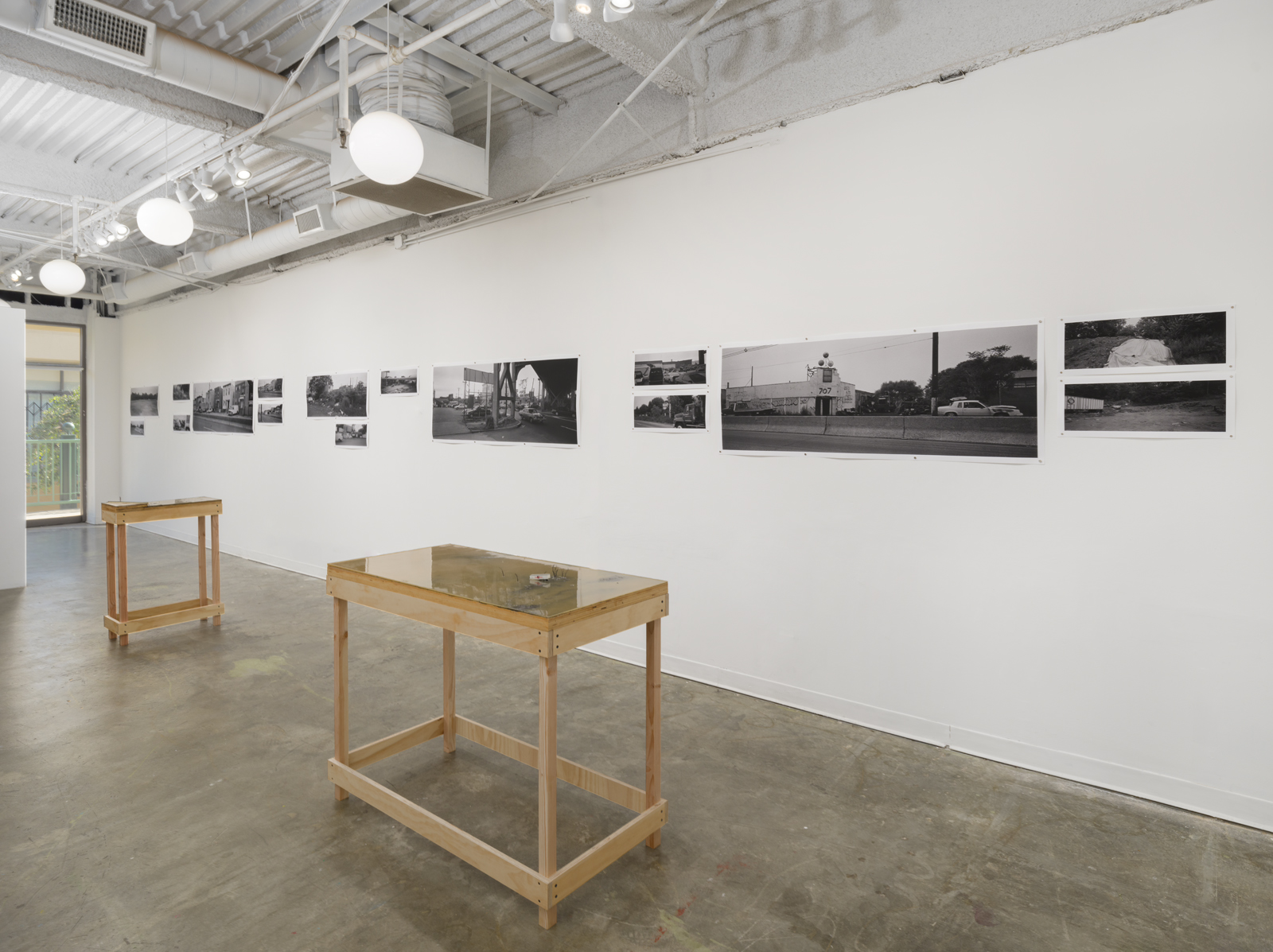
Michael Ashkin-“Here, in the desert” installation at FOYER-LA (photo: Jeff McLane)
You could also here talk about time—the passing of time—and your choice of how to capture it and hold it expose both your experience of time accumulating through your repetitive journeys in this landscape and the environmental effect caused by time passing. Also, the treatment or understanding of time represented in the photographic work vs. the sculptures. For me, I feel like there is a passage/movement in the photographs where the sculptures feel static—like there is a frozen event.
This is an excellent point, but so difficult to answer. If I understand you, I can answer that I am striving to escape from linear time into something approaching a more eternal awareness. And by eternity, I mean a state where the past, present, and future co-exist. Do the sculptures do this because we, the observers, move bodily and temporally in the present around a frozen moment? And maybe the photographs do that because we continue, relentlessly, to pass through a landscape of “difference within similarity” for what seems like an unending day? Relentlessness and implied infinity have always seemed integral for the truth value of my work.